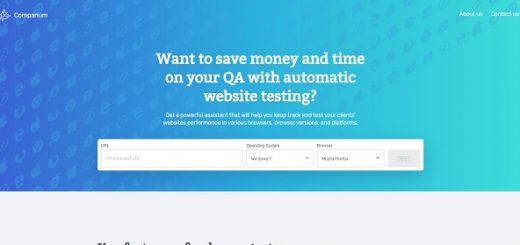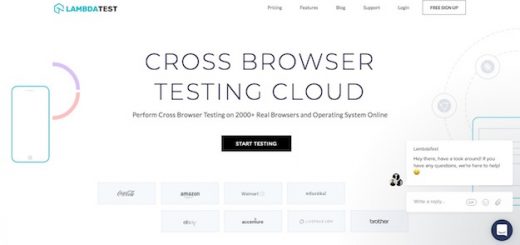A private branch exchange system, or PBX, was once very popular in the world of call centers.
Mostly because there was no alternative to this technology.
It was used for inbound calls and internal communication of a company.
Let’s find out the major differences between PBX and cloud call center software.

Functions of PBX and Cloud Call Center
PBX tech sometimes requires an expensive telephony infrastructure and professional telephony engineers for maintenance and fixing. In the case of cloud call centers, you pay only for the subscription. It’s also designed for more rich communication, such as inbound and outbound calling campaigns, web chats, SMS, emails, etc.
Advanced Call Routing System has an Edge for Customer Satisfaction
The cloud call center has a smart routing system to provide numerous options for routing customers to relevant departments or agents without delays. As an example, in the cloud you have such types of routing capabilities:
# Smart routing systems detect the particular phone number of regular customers and route them to the relevant department or agent.
# Through Interactive voice response IVR and self-service systems, customers achieve the services without an agent if possible.
# In a situation when all agents are busy, it routed customers to the other business phones or outsourced call centers.
Competitive Dialing Technologies
Most of the PBX systems are obsolete and use manual dialing systems instead of automated features. On the contrary, cloud call centers use three types of automated dialers:
Progressive (Power) dialer. Progressive dialer dials numbers from the list and connects the agent with the real person one by one. An agent has control over the call duration and decides when to end the call. During the dialing process, the system detects voicemails, answering machines, busy calls, etc. Every agent will be connected only with the real person, so there are no abandoned calls.
Depending on the duration of the call, the Progressive dialer gives an astonishing increase in productivity for each agent, up to 150-300 live calls per day.
Predictive dialer. Predictive dialer ideally designed for calling to numbers in a cold base. To use this dialer effectively, you need at least 5+agents available during the calling session.
Based on statistical data, and the duration of previous calls, the dialer automatically estimates the required dialing pace and how much time each agent is required for finishing the conversation. It can automatically dial the next number while an agent is about to finish speaking with a customer.
Preview dialer. The advantage of the dialer is informing an agent about a customer by showing the customer’s record to an agent before the call. When an agent observes the customer’s information, it’s up to him to decide whether to dial the customer or skip him to call the most relevant customers.
Queue Management and Call Distribution
An automatic call distribution system (ACD) routes customers to relevant agents or departments based on the purpose of a call. It is not always possible to answer all the calls simultaneously fast and effectively, especially in a high calling volume.
To provide the highest customer satisfaction, the system has an option for callback and messaging for those who are put on hold.
VoIPTime Cloud call center gives you many options to manage the call queue:
# In a case you have a single incoming line that serves for a particular project, calls distributed to departments or particular agents, depending on their relevance, skills, and competence;
# If you have a single incoming line for several projects, you have options to:
# Distribute calls only for specific groups of projects or to the relevant agent’s teams;
# Distribute calls with the option to extend the agent’s team (with competence or without competence on a particular project). It is used when you have a high volume of calls and you need to reduce queue and on-hold time without losing customer experience.
# When you have multiple incoming lines for multiple projects at a time, based on variants listed above, you can distribute calls to all agents in a call center.
Relevant reporting
Because of the call logger, you can make basic analytics and recording of calls, using PBX systems. A cloud call center gives you comprehensive and complex data about every activity in inbound or outbound calling campaigns. You have an option to observe:
# agent’s performance
# track inbound and outbound calls
# track results during calls
# track queue time of each customer and Service Level for each ACD line
# time spent by customers during IVR duration, etc.
You also have a workforce management function, to schedule shifts and track their adherence.
Call monitoring and Quality Evaluation
Monitoring of the live and recorded calls is one of the crucial advantages of a remote call center. By using monitoring of the call center, you can analyze live calls in modes such as call barging, hidden, and whispering.
In comparison with PBX that can only record calls, a cloud call center has much broader functions. You have an option to evaluate each call of each agent, according to criteria like:
# adherence to scripts;
# proper greeting;
# problem-solving;
# duration of a call;
# strong or weak arguments during a call, etc.
You have an option to leave comments and use a graduation system for particular calling conversations or overall agent’s activity. By doing so, your agents will understand where they need to put more effort.
Call Scripting for Agent’s Performance
Call scripting of VoIPTime Cloud call center gives an option to construct relevant call scripts within 15 minutes. It gives relevant aid to an agent in a challenging situation during a call. It is helpful for experienced and newbie agents that sometimes lose control over a conversation. You can use different polls, knowledge bases, HTML Iframe.
Final Statements
A private branch exchange system is useful at the first stages of your business. For example, when you have a small business that wants to tackle inbound calls and internal company communication. Sometimes, PBX requires a physical infrastructure and professional telephony engineers for fixing and diagnosing the system.
For cloud call center solutions, you can adjust your call center involving no infrastructure or telephony engineers. There is no additional fee for education or maintenance of a cloud. All your work will be fully managed, fixed, and updated remotely. Of course in the cloud’s case, you have an option to have a digital multichannel communication to interact with customers on your terms.




